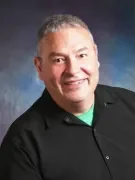
ASHT member Frank Grispino, MOT, OTR/L, CHT recently wrote a column about occupational therapy to celebrate OT Month 2024.
FRANK DISCUSSIONS ABOUT HEALTH
Column: Learning about OT during Occupational Therapy Month
BY FRANK GRISPINO MOT, OTR/L, CHT / Maryville Forum
Apr 21, 2024
Since every April is Occupational Therapy Month, and I’m an occupational therapist, I thought I would take this month’s column and give you an overview of the discipline.
Occupational therapy formally started in the early 1900s. It was originally used in the treatment of individuals with mental health issues. Physically and mentally wounded veterans from WWI and WWII increased the need for occupational therapy. Physical dysfunction now became another area addressed by practitioners in the field. This gave the discipline an identity, and propelled it toward what it is today.
The name occupational therapy, or OT, can be confusing to those in the field of health care and the lay public, too. Occupation in this sense refers to human occupation, not a job or career. Human occupation can be thought of as another word for activity. OTs use activity whenever possible as therapeutic interventions. Multiple strong studies have shown that use of an activity vs. plain exercise is a more effective way to rehabilitate.
The guiding goal of occupational therapy is to improve a person’s function in the life roles they participate in. Parent, student, artist, worker and musician are just a few examples of life roles. When the performance of these roles suffers because of mental or physical disability, the occupational therapist may be called in to help with the goal of maximizing independence.
There are several ways the OT may do this. We can try to fix the physical problem — again, using functional activity as a therapeutic medium when possible. Occupational therapists spend a lot of time learning to analyze tasks and break them down into base components or steps. From this information, an OT can identify where and how the dysfunction impacts the task performance. At this point, it’s easier to modify the task or the way the task is performed. If the physical problem can’t be fixed, this allows the use of modified techniques or adaptive equipment to maximize independence.

